-
 Berrettini puts Italy on verge of third straight Davis Cup triumph
Berrettini puts Italy on verge of third straight Davis Cup triumph
-
Trump blasts Ukraine for 'zero gratitude' amid talks to halt war
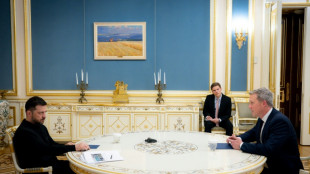
-
 Ouedraogo stunner sends Leipzig second
Ouedraogo stunner sends Leipzig second
-
What does US 'terrorist' designation for Venezuela mean?
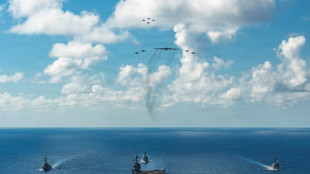
-
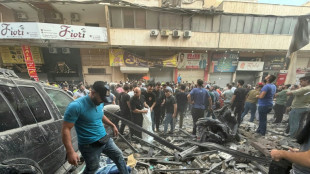 Israel targets Hezbollah chief of staff in deadly Beirut strike
Israel targets Hezbollah chief of staff in deadly Beirut strike
-
Scotland thrash Tonga in Autumn Nations finale

-
 Three key Irish takeaways from Autumn Nations Series
Three key Irish takeaways from Autumn Nations Series
-
Imperious Shiffrin swoops to 103rd win at Gurgl

-
 Schmidt challenges Wallabies to 'roll up their sleeves' after gruesome year
Schmidt challenges Wallabies to 'roll up their sleeves' after gruesome year
-
Washington seeking to 'iron out' Trump proposal details with Ukrainians in Geneva
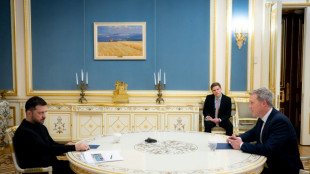
-
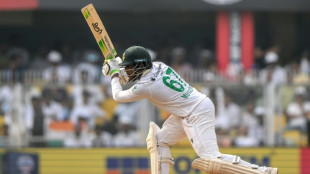 South African centurion Muthusamy celebrates 'awesome' Test journey
South African centurion Muthusamy celebrates 'awesome' Test journey
-
Brazil 'very concerned' about US naval build-up near Venezuela

-
 Liverpool a 'mess' says Van Dijk
Liverpool a 'mess' says Van Dijk
-
First blind women's T20 cricket World Cup boosts sport

-
 France eye Dupont boost for Six Nations defence
France eye Dupont boost for Six Nations defence
-
McLaren boss apologises to Norris, Piastri for Vegas disqualification

-
 G20 grapples with splintering world order
G20 grapples with splintering world order
-
Verstappen wins big in Vegas with McLarens disqualified

-
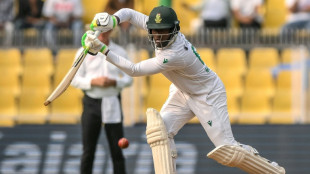 Muthusamy, Jansen put South Africa on top in second India Test
Muthusamy, Jansen put South Africa on top in second India Test
-
Rubio lands in Geneva for talks on Ukraine plan
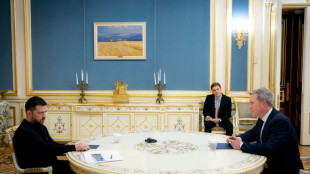
-
 Norris and Piastri disqualified from Las Vegas GP
Norris and Piastri disqualified from Las Vegas GP
-
Slovenia holds crunch vote on contested assisted dying law
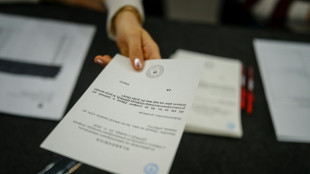
-
 Aonishiki beomes first Ukrainian to win sumo tournament
Aonishiki beomes first Ukrainian to win sumo tournament
-
Holders Australia drawn with New Zealand in Rugby League World Cup

-
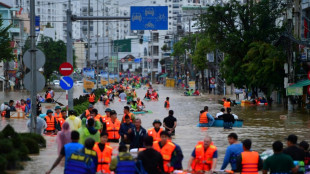 Vietnam flooding kills at least 90
Vietnam flooding kills at least 90
-
Muthusamy's maiden Test century powers South Africa to 428-7

-
 Myanmar junta says nearly 1,600 foreigners arrested in scam hub raids
Myanmar junta says nearly 1,600 foreigners arrested in scam hub raids
-
US signals room for negotiation on Ukraine plan ahead of talks

-
 Verstappen wins Las Vegas F1 Grand Prix, Norris edges closer to crown
Verstappen wins Las Vegas F1 Grand Prix, Norris edges closer to crown
-
Muthusamy anchors South Africa to 316-6 in second India Test

-
 Vietnam flood death toll rises to 90
Vietnam flood death toll rises to 90
-
US denies pushing Russian 'wish list' as Ukraine plan

-
 Harden's 55 leads Clippers win as Pistons streak hits 12
Harden's 55 leads Clippers win as Pistons streak hits 12
-
Kim's first top-10 in 14 years as Ballester wins maiden pro title

-
 Gotham crowned NWSL champions after Lavelle breaks Spirit
Gotham crowned NWSL champions after Lavelle breaks Spirit
-
Trump signals room for negotiation on Ukraine plan ahead of talks

-
 Head shapes up as solution for Australia's opening woes
Head shapes up as solution for Australia's opening woes
-
Tomorrowland bets on Chinese dance music fans with first indoor event

-
 England slammed as 'brainless' after first Ashes Test capitulation
England slammed as 'brainless' after first Ashes Test capitulation
-
Slovenia to hold new vote on contested assisted dying law

-
 'Beer tastes better' for Eramsus after win over Irish
'Beer tastes better' for Eramsus after win over Irish
-
No.1 Jeeno leads by six at LPGA Tour Championship

-
 Neres double fires Napoli top in Italy
Neres double fires Napoli top in Italy
-
Bielle-Biarrey masterclass helps France hold off Australia

-
 Pogba returns in Monaco loss as PSG stay top in France
Pogba returns in Monaco loss as PSG stay top in France
-
COP30: Key reactions to climate deal

-
 What did countries agree to at COP30?
What did countries agree to at COP30?
-
Harden's club-record 55 points leads Clippers over Hornets

-
 Amazon climate deal a 'win' for global unity but fossil fuels untouched
Amazon climate deal a 'win' for global unity but fossil fuels untouched
-
Boos, blowups and last-minute pause as a chaotic COP30 closes out

Iran's Nuclear Ambitions
The recent US military strikes on Iran's nuclear facilities have raised questions about the current state of Iran's nuclear program and its potential to develop a nuclear weapon. While the US administration claims that the strikes have "completely and totally obliterated" Iran's key nuclear enrichment facilities, there are conflicting reports and expert opinions on the true extent of the damage.
On June 22, 2025, the United States launched a series of airstrikes on three major Iranian nuclear sites: Fordo, Natanz, and Isfahan. The operation, codenamed "Midnight Hammer," involved B-2 Spirit stealth bombers dropping massive bunker-buster bombs and a submarine launching Tomahawk missiles. President Donald Trump announced that the strikes were a "spectacular military success" and that Iran's nuclear ambitions had been "obliterated."
However, a leaked preliminary intelligence assessment from the Defense Intelligence Agency suggests that the strikes may have only set back Iran's nuclear program by a few months. According to sources familiar with the report, the attacks sealed off the entrances to two facilities but did not collapse their underground structures. Additionally, it is believed that some centrifuges used for uranium enrichment might still be intact.
Further complicating the picture, there are indications that Iran may have relocated its stockpile of enriched uranium prior to the strikes. Satellite imagery from the days before the attack shows trucks at the Fordo and Isfahan sites, possibly moving materials away from the facilities. If Iran has safeguarded its enriched uranium, it could potentially resume its nuclear activities more quickly than if the stockpile had been destroyed.
The International Atomic Energy Agency (IAEA) has confirmed that the three sites were hit and has reported extensive damage, particularly at Esfahan and Fordo. However, the agency also noted that there has been no increase in off-site radiation, suggesting that any radioactive materials were not released during the attacks.
Experts are divided on the long-term impact of the strikes. David Albright, president of the Institute for Science and International Security, stated that restoring Iran's nuclear program would require significant time, investment, and energy, and that Iran risks further attacks if it attempts to rebuild. Conversely, Jeffrey Lewis, a professor at the Middlebury Institute of International Studies, argues that the program is not destroyed and that Iran might still possess the necessary materials to continue its pursuit of nuclear weapons.
Prior to the strikes, the IAEA had reported that Iran possessed over 400 kilograms of uranium enriched to 60%, which is close to the 90% purity needed for a nuclear weapon. If this stockpile remains intact, Iran could theoretically use it to produce a bomb relatively quickly, provided it can rebuild its enrichment capabilities.
However, with the facilities damaged, Iran would need to reconstruct its infrastructure, a process that could take months or even years, depending on the extent of the damage and the resources available to Iran.
Moreover, Iran is now under intense international scrutiny, and any efforts to rebuild its nuclear program would likely face strong opposition, including the possibility of further military action.
In conclusion, while the US strikes have undoubtedly inflicted damage on Iran's nuclear facilities, the true impact on Iran's ability to develop a nuclear weapon remains uncertain. The status of Iran's enriched uranium stockpile and the resilience of its underground facilities are key factors that will determine how close Iran is to possessing a nuclear bomb. As of now, it is unclear whether the strikes have significantly delayed Iran's nuclear ambitions or merely caused a temporary setback.

EU: No agreement on 10-year extension for glyphosate

Ukraine: When will the world stand up to Russian terror?

Warming: Methane levels rising, is this nature's answer?

Israel has every right to destroy Hamas and Hezbollah!

What are the effects of climate change on sea flora?

Azerbaijan is in control: Armenians flee Nagorno-Karabakh

EU countries agree on watered-down car emissions proposal

Hungary-Dictator PM Orban claims EU 'deceived' Hungary

Europe: How gas prices fell from €300 to €35 MWh in one year

British musicians lose gigs in Europe since Brexit

Japan: Toyota stops production due to computer system error




